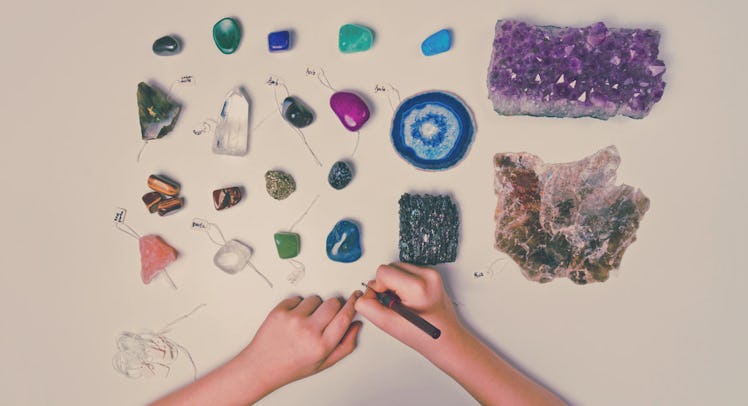The Apathetic Guide to Birthstones for Men
A brief history of birthstones — and a few gifts to get the gem lover in your life.

Birthstones. The idea of commemorating a birth with a gemstone — especially a gemstone that has been specifically designated to commemorate that specific month as a one-size-fits-all symbol — is honestly a bit confusing. Why? And, more important, how? For the completely uninitiated, there’s basically a list of birthstones in order from January to December, meaning you have a specific birthstone depending on when you were born. Out of all the birthstones, though, some are prettier and easier to make part of everyday products and jewelry. Gifting birthstones for men is particularly hard since you can’t tack it onto a bracelet or necklace and call it a day. To make more sense of the world of birthstones though, read through our brief history below, in addition to our list of a few birthstone gifts you can give to any gem lover you have in your life.
History of Birthstones
The modern-day tradition of using a specific gemstone as a symbol of one’s birth month stems (unsurprisingly) from religious relics. According to the in-depth book The Curious Lore Of Precious Stones by Jeff Kunz, the first-century Jewish historian, Josephus, was the first to associate gemstones with months of the year. Josephus concluded that the twelve stones of Aaron’s breastplate — which was written about in the book of Exodus in the Bible — and those gemstones were connected to the twelve months of the year. This was eventually connected to the twelve zodiac signs, thus giving the idea of gemstones a more comprehensive context than a religious one.
RELATED: Alternative Pain Management for Birth
The practice of wearing a different gemstone each month to acknowledge the twelve apostles transformed across culture and through the generations into the practice of wearing one gemstone for a certain month. According to the Gemological Institute of America, the custom on modern-day birthstones started it in Germany in the 1560s – and had little to do with anyone’s breastplate or the Bible.
Birthstones by Month
Jewelry companies have capitalized on the confusing translations of the historical (and religious) origins of month-specific gemstones with marketing to create the market of birthstone bracelets that we have today. According to Oliver Cummins Farrington in his book Gems and Gem Minerals, Tiffany & Co. published poems “of unknown author” for the first time in a pamphlet in 1870 that matched each month of the Gregorian calendar with a birthstone. To make order of all this, the (American) National Association of Jewelers (now known as Jewelers of America) met in 1912 to adopt and publish a list of official birthstones. That’s what we still use as a guideline today — and it looks like this:
- January: Garnet
- February: Amethyst
- March: Aquamarine
- April: Diamond
- May: Emerald
- June: Pearl or Alexandrite
- July: Ruby
- August: Peridot
- September: Sapphire
- October: Tourmaline or Opal
- November: Topaz or Citrine
- December: Tanzanite, Zircon or Turquoise
Birthstone Characteristics and Qualities
Each gemstone represents characteristics and qualities — much like the signs of the Zodiac.
- January’s garnet supposedly enhances trustworthiness
- February’s amethyst brings is a symbol of sincerity and wisdom
- March’s aquamarine is associated with good health and hope
- April’s diamond represents love
- May’s emerald symbolizes rebirth
- June’s alexandrite promotes balance
- July’s ruby supposedly bring good fortune
- August’s peridot brings power
- September’s sapphire represents loyalty and trust
- October’s opal is associated with good luck
- November’s topaz brings healing
- December’s turquoise is the stone of warriors
Birthstone Gifts for Men and Women
Sold yet? You might not be, but if you do have someone in your life that is super into birthstones, we have a few birthstone gifts that won’t make you cringe, and also won’t break the bank.
This article was originally published on